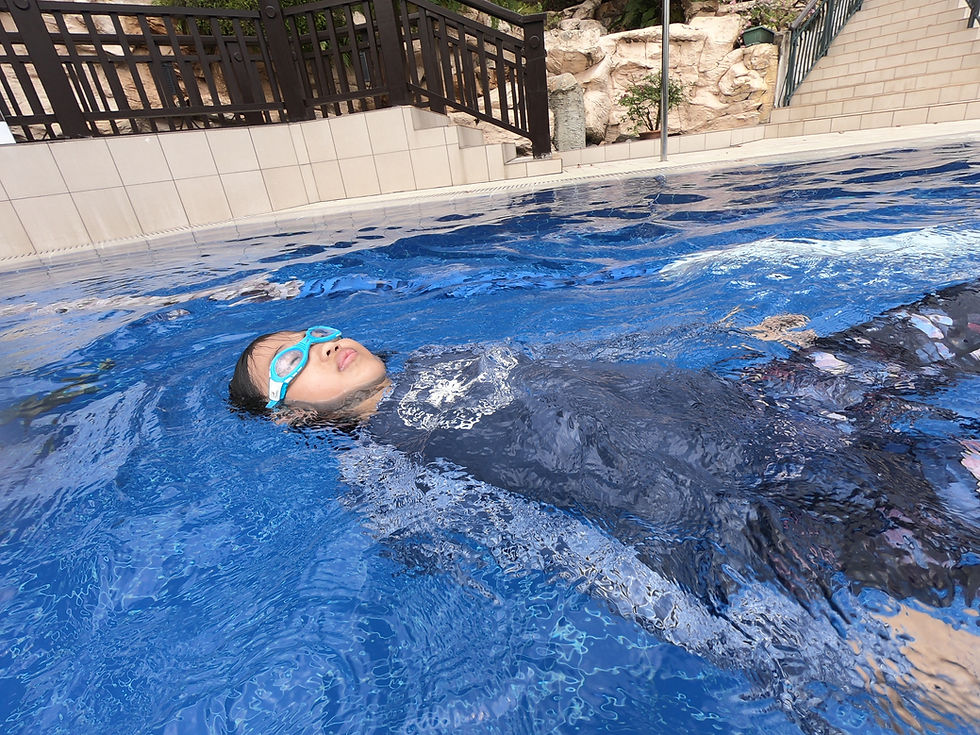Race Simulation Drills: Mentally Preparing for Breaststroke Races
- SG Sink Or Swim

- 4 days ago
- 4 min read

Rehearsing Victory — How to Train Your Body and Mind for Race-Day Excellence
Breaststroke is a stroke of precision, patience, and power. But on race day, even the most technically sound swimmer can falter under pressure. Nerves, distractions, or poor pacing can unravel months of training in a single 100-meter race.
The antidote? Race simulation drills — structured practices that replicate not just the physical demands of competition, but the mental, emotional, and strategic challenges too. When you’ve “lived” the race in practice, the real thing feels familiar, not frightening.
In this guide, we’ll show you how to design and execute breaststroke race simulations that build confidence, sharpen focus, and prepare you to perform your best when it matters most.
🎯 Why Race Simulation Is Non-Negotiable for Breaststrokers
Unlike freestyle or backstroke, breaststroke leaves no room for error:
Timing is everything: A rushed kick or early glide kills momentum
Turns are technical: One illegal move = disqualification
The “grind zone” is real: The third 25 of a 100m is where races are won
Pacing is subtle: Go out too hard, and you’ll die on the breaststroke leg of an IM
Race simulation builds muscle memory, mental resilience, and tactical awareness — so you’re ready for anything.
“I don’t just swim my race. I’ve already swum it 50 times in practice.”— Adam Peaty, Olympic Breaststroke Champion
🧠 The 4 Pillars of Effective Breaststroke Race Simulation
1. Physical Replication
Mimic race distance, pace, and rest
Wear your race suit, cap, and goggles
Swim at the same time of day as your meet
2. Mental Rehearsal
Use pre-race routines (breathing, visualization)
Practice focus cues (“Pull compact. Kick tight.”)
Simulate distractions (crowd noise, false starts)
3. Technical Execution Under Fatigue
Maintain stroke count and timing when tired
Execute legal, fast turns every time
Preserve body position in the final 25
4. Strategic Pacing
Practice your exact race plan:
50m: All-out, minimal glide
100m: Controlled first 50, negative split second 50
200m: Patient first 100, build to finish
🛠️ 5 Race Simulation Drills for Breaststroke Success
1. Full Dress Rehearsal
Purpose: Build familiarity and reduce race-day anxiety.
How to do it:
Arrive at pool as if it’s meet day
Put on tech suit, cap, goggles
Do your full warm-up routine
Swim 1–2 full race efforts (e.g., 100m breast)
Cool down exactly as you would at a meet
💡 Do this 3–5 days before major competitions.
2. “Grind Zone” Sets
Purpose: Train mental toughness for the hardest part of the race.
How to do it:
4 x 75m breaststroke
First 50m @ 85%
Last 25m @ 100% (the “grind zone”)
Rest: 90s (simulate between heats)
Focus: “Timing holds. Kick snaps. Glide smart.”
🎯 Cue: “This is where champions are made.”
3. Turn & Transition Sprints
Purpose: Master legal, explosive turns under pressure.
How to do it:
8 x 25m breaststroke
Start from push-off (not dive)
Focus: Legal open turn + powerful pullout
Time each 25m — aim for consistency
Add crowd noise or coach distractions
⚠️ Rule Check: Touch with both hands simultaneously while on breast.
4. Pacing Ladders
Purpose: Lock in your race strategy.
How to do it (100m focus):
1 x 25m @ 100%
1 x 50m @ 90%
1 x 75m @ 85%
1 x 100m @ race pace (negative split)
Rest: 2 min between
📏 Use a Tempo Trainer to lock in stroke cycle time (e.g., 1.6s for 100m).
5. “Blind Race” Simulation
Purpose: Build focus in chaotic conditions.
How to do it:
Swim race distance in a crowded lane
Coach gives random commands: “False start! Go again!”
Teammates splash or call out times
Focus on your plan, not the noise
🧠 Teaches emotional control under pressure.
📅 Sample Race Week Plan (100m Breaststroke Focus)
Monday – Technique + Turns
Full dress rehearsal: 2 x 100m race pace
8 x 25m turn sprints
Wednesday – Grind Zone + Pacing
4 x 75m grind sets
Pacing ladder: 25 → 50 → 75 → 100
Friday – Taper & Mental Prep
4 x 50m easy with race breathing
Visualization: 10 min lying on deck, eyes closed
Pack meet bag, review race plan
Saturday – RACE DAY
Trust your rehearsal. Execute your plan.
💬 Mental Cues for Race Day
On the blocks: “Calm. Ready. Confident.”
First 25: “Strong pull. Fast kick. No rush.”
Turn: “Touch legal. Tuck fast. Explode.”
Final 25: “Timing is everything. Finish proud.”
🧘♀️ Pre-race breathing: 4-7-8 method (inhale 4s, hold 7s, exhale 8s) — 3 rounds
⚠️ Common Race-Day Mistakes — And How Simulation Prevents Them
Going out too hard | Pacing ladders teach controlled starts |
Illegal turns | Turn sprints build muscle memory |
Fading on final 25 | “Grind zone” sets build mental toughness |
Panic in crowded heats | “Blind race” drills reduce distraction sensitivity |
Poor warm-up | Full dress rehearsal refines routine |
💡 Pro Tips from Elite Coaches
“The race is won in practice — not on the blocks.”
“Confidence isn’t hoping it goes well. It’s knowing you’ve done it before.”
Final Thoughts
Race simulation isn’t about adding more stress — it’s about removing the unknown. When you’ve practiced your start, your turn, your grind zone, and your finish under conditions that mimic competition, race day becomes just another opportunity to execute what you’ve already mastered.
So rehearse with purpose.Visualize with clarity.And trust that when the whistle blows,you’re not just ready —you’ve already won.
Pull compact. Kick tight. Turn legal. Finish strong.
Because in breaststroke, the race isn’t just swum — it’s lived in practice first. 🐸⏱️💙





Comments